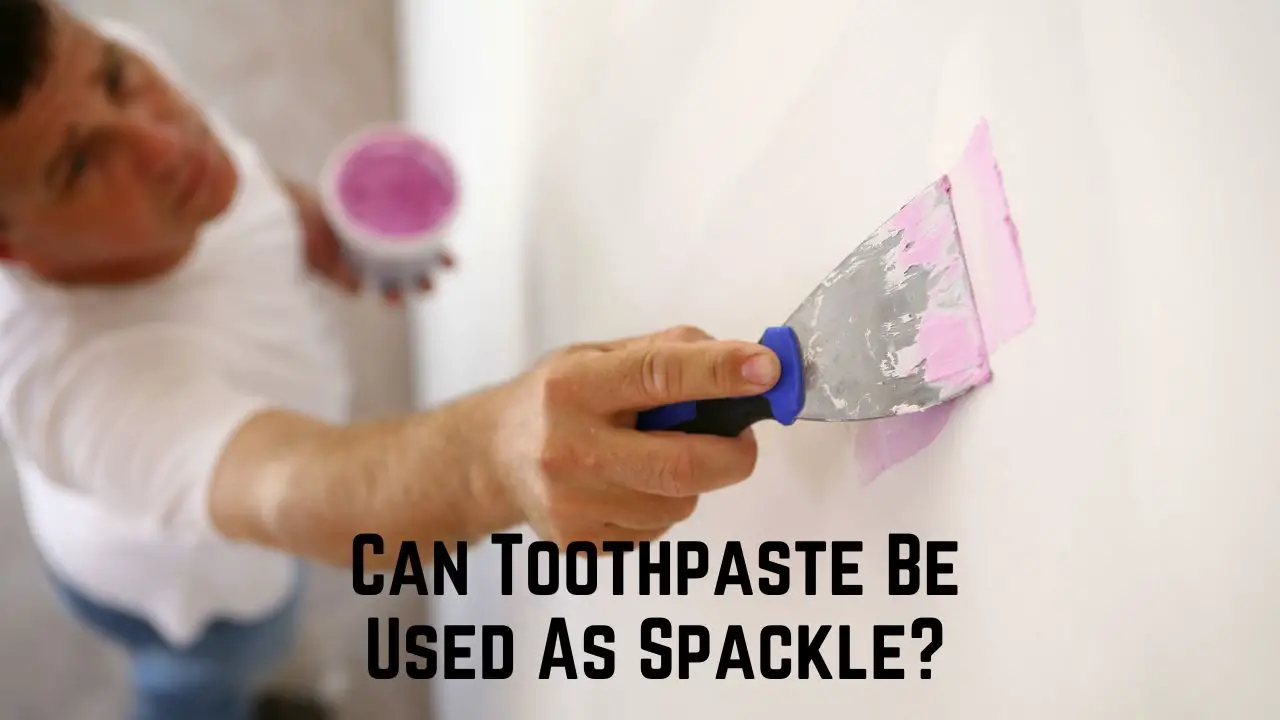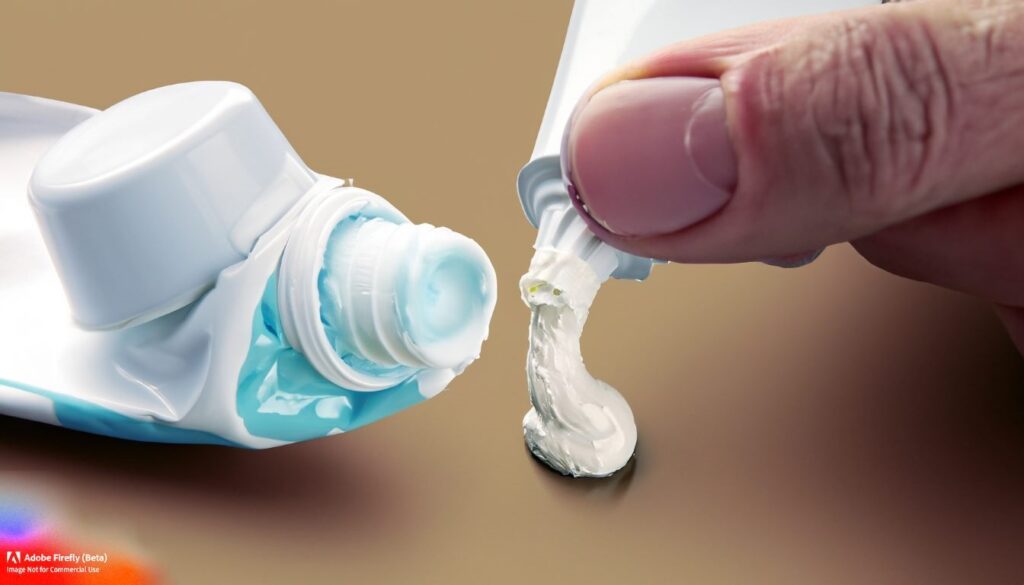
Spackle is a go-to solution for all those wall holes, cracks, and imperfections. It is typically a paste/ filler that is often used in construction and home improvement projects. Not only walls but Spackle can also be used on a range of other surfaces. However, there has been a long since DIY experts have been keen on using Toothpaste as a Spackle substitute. Toothpaste is a primary oral care product and household item that comes in handy for a range of purposes. Using Toothpaste as a substitute for Spackle is an ingenious hack and unconventional remedy. But is this remedy useful and long-lasting? Come, let’s find out.
Join us in this article as we delve into the question: Can Toothpaste be used as a spackle? We will explore this unconventional approach by examining the properties of Toothpaste and comparing them to traditional Spackle. Make sure you stick to the end to get the most out of this comprehensive guide. Using Toothpaste instead of Spackle can be a small task, but if you often do this, you need to understand all its potential impacts.
Table of Contents
Spackle Vs. Toothpaste Formulation
Visually, Spackle and Toothpaste may appear similar in consistency and application. However, in reality, both these products serve different purposes. Here’s a quick difference between the formulation of Spackle and Toothpaste:
Spackle is a repairing paste/ filler composed of gypsum or calcium carbonate, binders, and water. It is formulated to fix walls, ceilings, and other holes and cracks. The formulation of Spackle provides the necessary adhesion, durability, and drying properties required for repairing.
Whereas Toothpaste is formulated with abrasives, humectants, thickeners, fluoride, flavorings, and actives. It is commonly used to clean and protect teeth. Toothpaste may offer some level of adhesion and may have drying properties, but it is totally different from Spackle as a repairing product.

Can Toothpaste Fill Wall Holes?
Yes, Toothpaste can fill small wall holes and cracks temporarily, especially the ones caused by screws and nails. It offers a quick fix for all minor holes, but Toothpaste isn’t formulated as a long-lasting wall repair material. Also, Toothpaste isn’t a significant wall repair DIY for larger, deeper, or more intense wall holes and cracks. Toothpaste doesn’t have that adhesiveness and durability to keep the hole fixed for the long term. Even if you use it as a quick DIY, Toothpaste may start falling out within a few weeks.
How To Use Toothpaste To Fill Small Wall Holes?
When using Toothpaste to fill small holes in walls, follow these steps:
- Take a small brush and start by removing any dust or loose debris from the hole/ crack on the wall.
- Now take a tube of traditional white Toothpaste and squeeze a small amount of it directly into the wall hole/ crack. Using a putty knife/ butter knife/ finer, press the Toothpaste into the hole/ crack nicely.
- Now using a putty knife, smoothen down the wall surface ensuring the entire wall has a smooth finish. You can wipe away any excess toothpaste for precise results.
- Let the Toothpaste dry, and finish it up with a coat of wall paint. However, when working with Toothpaste, be quick, as it may dry out in no time.
NOTE: Although Toothpaste provides a seamless repair finish for small holes and cracks, it may shrink or crack over time.
Can Toothpaste-Based Repairs Withstand The Test Of Time?
Toothpaste is a dental care product, and it is not intended to offer long-lasting wall-repairing results. Toothpaste can only fill small holes in the walls temporarily. It isn’t a durable wall-fixing material and thus cannot withstand the test of time. A Toothpaste formula typically consists of actives, mild abrasives, binders, and humectants that fulfill oral and dental care needs. These ingredients, as a standalone and in a formulation, are not meant for any kind of structural repair.
Using Toothpaste for wall repairs can give quick results, but over time, Toothpaste can shrink, crack, or crumble. Toothpaste is not formulated to bond effectively with wall surfaces. It is too weak to handle the stresses and movements that walls can undergo.
Therefore for a permanent or at least long-lasting repair, using wall patching materials such as Spackle, joint compound, or drywall putty is advisable. Materials like these are meant for durability and long-lasting results and can withstand the test of time. Spackle and wall putty are meant to maintain the integrity of the repaired area.
In case of facing significant holes or damage to your walls, consult a professional or use proper wall repair techniques to ensure a reliable and lasting solution. Remember, walls are the backbone of any structure, and repairing them rightfully is vital.
Are There Any Limitations To Using Toothpaste As Spackle?
Toothpaste is a temporary, makeshift solution to fill small wall holes. However, when used as a substitute for spackle or proper wall patching materials, Toothpaste have some limitations. For instance:
- Toothpaste cannot fix the same level of wear and tear as Spackle or any other wall-repairing material.
- Toothpaste will degrade over time, especially if the wall is exposed to moisture, temperature fluctuation, and weather changes.
- Toothpaste doesn’t adhere to wall surfaces that are textured or have a glossy paint finish. They may not bond effectively and may lead to less secure and less durable repair.
- Unlike Spackle, Toothpaste is not intended for a smooth and seamless finish. When fixing wall holes with Toothpaste, sanding it or painting over can be slightly tricky.
- Using Toothpaste instead of Spackle can result in a less aesthetically pleasing outcome.
- Toothpaste, when used to fix wall holes, can compromise the integrity of the repair by cracking or shrinking as it dries.
Benefits And Drawbacks Of Using Toothpaste As Spackle
Using Toothpaste as a substitute for Spackle have its fair share of benefits and drawbacks. For instance:
4 Benefits of using Toothpaste as Spackle:
- Toothpaste is readily available and thus is a convenient option for filling small holes in walls. In contrast, Spackle or other fixing materials may not be readily available.
- For temporary fixes, Toothpaste is an affordable choice than investing in a whole package of Spackle.
- Toothpaste is a quick temporary solution for fixing minor holes or blemishes in walls until proper repair can be made.
- Using Toothpaste for wall hole/ crack repair is easy and doesn’t require any special skill/ tool. In contrast, using Spackle to repair wall damage requires tools to get the job done right.
4 Drawbacks of using Toothpaste as Spackle:
- Although Toothpaste may quickly fix small wall holes, it isn’t durable or long-lasting. Toothpaste may not hold up well over time and tear up in high-traffic areas or areas exposed to moisture, temperature, and weather.
- Toothpaste isn’t adhesive and thus less effective on certain wall surfaces. Due to no adhesion, it is also less secure and will result in less durable repair.
- Toothpaste doesn’t offer a professional-looking finish like any other wall-repairing product.
- Using Toothpaste for wall repairs is limited only to small holes and minor repairs. It isn’t an ideal solution for larger holes or more significant wall damage.
Can You Use Toothpaste As Wood Putty?
While Toothpaste may repair small wall holes, it isn’t an ideal substitute for wood putty. Toothpaste formulation lacks the necessary properties for a durable repair and isn’t designed to offer effective results on wood. In contrast, Wood putty is meant for filling and repairing wood surfaces. The adhesion, durability, and compatibility with the wood finish cannot be gained by using Toothpaste.
Bottom Line…
Although Toothpaste can fix wall holes and substitute for Spackle, it is a temporary and makeshift solution. While using Toothpaste instead of Spackle, it is important to learn the limitations and sustainability of such DIYs. Instead of Toothpaste, it is better to stick with Spackle or Wall putty for a long-term and more effective solution.

Hi, This is Lyn, I suffer from dental sensitivity for a very long time. PowerToothpaste.com is where I share my views of various toothpaste brands, along with tips on how to use toothpaste and what to look for when purchasing.
